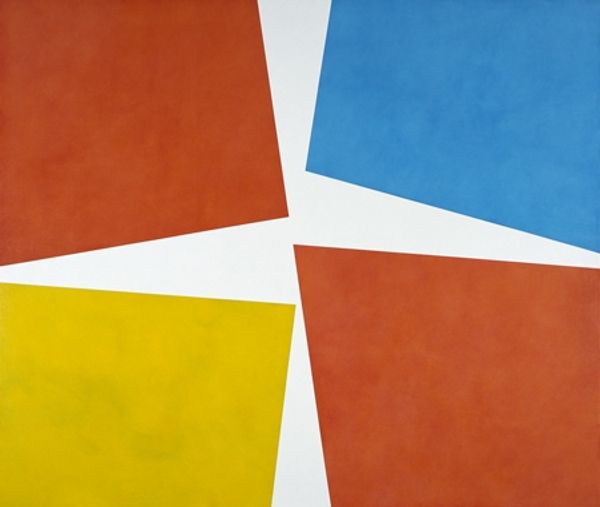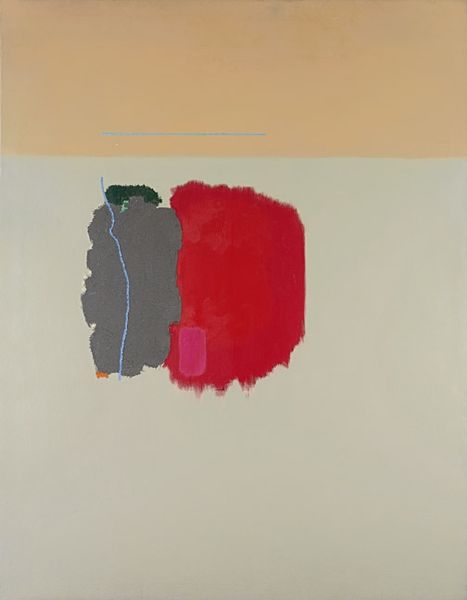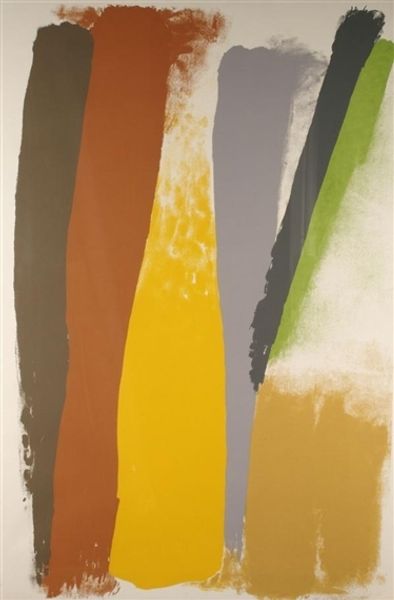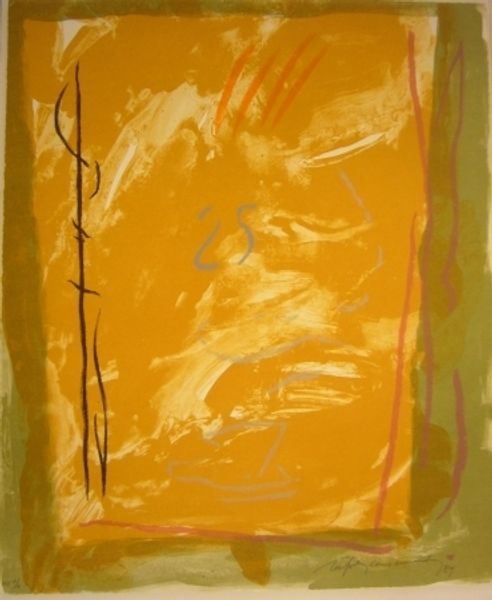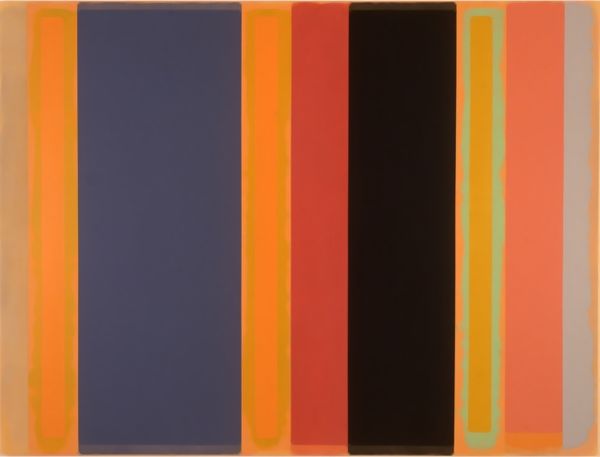
painting, acrylic-paint, paper
#
abstract-expressionism
#
painting
#
pop art
#
pastel colours
#
acrylic-paint
#
paper
#
form
#
geometric-abstraction
#
abstraction
#
line
#
modernism
Copyright: Friedel Dzubas,Fair Use
Curator: "Key Largo," an acrylic on paper work by Friedel Dzubas from 1964. Its composition is quite striking. Editor: Wow. My first thought is pure joy. It's like a colour block party on paper. Big, happy shapes shouting "hello sunshine". Reminds me of swimming pools and beach towels, totally optimistic. Curator: Note how Dzubas orchestrates the interplay between the dominant forms—a fleshy pink, a rich yellow, and that almost tanned sand-like shape, all set against an off-white field, very deliberately placed within the frame. Editor: See, I wouldn't say *deliberate*. It feels spontaneous, almost accidental, like he threw colours at the paper and this is what stuck. I guess that’s the beauty of abstraction. Is that paper, really? Curator: Yes, indeed. It appears to be unstretched and raw around the edges, creating an interesting tension between the controlled color fields and the unrefined support. And it's precisely that tension that embodies Dzubas' engagement with abstract expressionism. It moves between the planned and the spontaneous. The balance of those colour fields and forms is key. Editor: Okay, "balance" I can agree with. And "key". The pastel colours do give it that 60s pop art vibe, too, which jives with the time it was created. What about the title, “Key Largo”? Any clues in the piece about that reference? I think maybe its just about evoking those same sunny feels. Curator: A fascinating connection. It perhaps refers not to the place specifically, but maybe to the abstract feeling. That balance—evoking an atmosphere. Editor: So, all in all a total celebration of sun-drenched bliss then? Curator: Certainly, there's an evocative quality here and a focus on the material properties and interplay of forms. Editor: It makes me want to grab my swimsuit and hit the beach. Definitely feel that optimism you describe. Curator: Indeed. The composition of colors invites multiple readings, and speaks volumes about form.
Comments
No comments
Be the first to comment and join the conversation on the ultimate creative platform.
